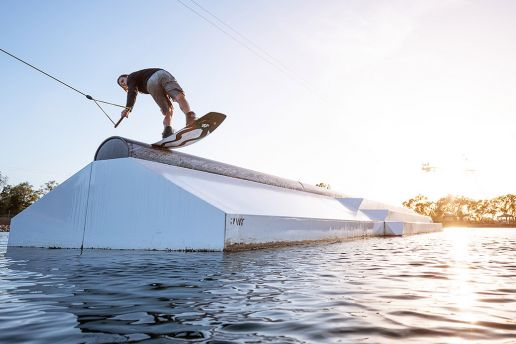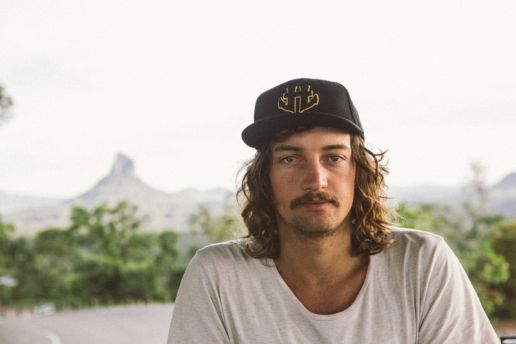If you follow the wakeboard industry for some time it doesn’t take long to understand wakeboard boats and the manufacturers of wakeboard boats dictate much of what happens with the future of wakeboarding.
Wakeboard boat companies sponsor the events and fund most of the bigger budget wakeboard films. Wakeboard boats pay for the majority of the advertising wakeboard and wakesurf publications rely on. Wake boat companies financially support pro wakeboarders or wakesurfers with the majority of their income [besides energy drink companies]. They even lobby the government to support broader recreational boat use. And well, you get the point…
wakeboard boat companies fund much of the wakeboard industry. From this, the wakeboard boat reviews you find online tend to be closely tied to the ‘the flow of money’.
We decided to deviate from the standard and pick our top 8 wakeboard boats of all time.
We selected boat performance characteristics that most wakeboarders would look for, void of financial incentives. Naturally, we focused on overall wake size and the performance to produce the endless wave. In other words, we’re focusing on the boats that create big, beefy wakes.
After driving and riding behind most wakeboard boats, talking with pro wakeboarders, and watching the wakeboard boat industry adapt to wakeboarding’s progression, we bring you our unofficial picks for the best wakeboard boats of all time. Here are the captains of the chop in chronological order.
Correct Craft: 1997 Sport Nautique
- History: first wakeboard specific boat model. This boat offered the first wakeboard tower, called the Flight Control Tower.
- Why: a new hull design combined with increased engine power.
- Wake: clean through the peak of the wake, steep, and solid.
This boat was considered the first wakeboard specific boat model that used Correct Craft’s patented Flight Control Tower. With the overhead new tower, Nautique could remove the water ski specific poles and pylons found on other boats at the time. This freed up more floor space for wakeboarders to drop in ballast bags and increase the amount of weight in the boat. Riders saw larger wakes and some serious 90’s air time
Even though this boat was released as a center mounted inboard ski boat, this was a bold release showing Nautique’s commitment to wakeboarding. The hull shape paved the way for the legendary Air Nautique models. The GT-40 351 engine provided enough low end torque to add more weight and create a bigger wake size. The Correct Craft / Nautique shape gave the riders a steep transition and hard lippy wake that launched the rider straight up.
Mastercraft Wakeboard Boats: 1999 X-Star
- History: boat released with V-drive placement [rear mounted engine].
- Why: the V-drive helped create the best wake shape between the three major brands at the time. (Nautique, Mastercraft, Malibu)
- Wake: happy medium. Not a steep face like Nautique, not mellow like Malibu of the same time.
With this release, Mastercraft moved the engine from inboard (center mounted engine) to V-drive (rear mounted engine). The engine placement added more weight to the back of the boat. Since V-drives were slightly larger boats, this also gave them more storage elsewhere. What did wakeboarders do? We filled them with more water, of course.
Famed wakeboarder Parks Bonifay helped make this wakeboard boat popular with his double up segment in the wakeboard film Shafted. Go watch it. You’ll get some of the most meaty double ups ever created at the time with this wakeboard boat. The ’99 X star gained popularity as the official tow boat for the X games events back when yellow hair dye was all the rage.
Mastercraft Wakeboard Boats: 2004 X-Star
- History: ushered in a new era of ‘pickle fork’ hull designs.
- Why: the pickle fork hull design led to major design breakthroughs.
- Wake: large size with wide transitions. Most like snowboard transitions of this time period.
The demand for larger wakes with more ballast meant wakeboard boat companies had to experiment with different hull and bow designs. This led to the creation of Mastercraft’s pickle fork bow design, which gave the Xstar it’s iconic spaceship-on-water appeal.
While we’re not sure how Mastercraft created the name pickle fork, The X-star hull and bow design was a major advancement for wakeboard boat companies at the time. As wakeboarders filled more ballast in the boat, the need to alter hulls and engine torque was apparent. It was common to ride behind boats where the wake would curl over from too much weight.
With this release, Mastercraft had found a breakthrough. They discovered the pickle fork and wider boat overall (beam & bow) could create wide and crisp wake transitions. A wider boat could also carry more ballast weight without pitching over to one side when turning. Wakeboarders used longer ropes, rode faster, and went bigger with the release of this boat.
Malibu Wakeboard Boats: 2005 Wakesetter VLX
- History: trademark ‘backwards tower’ and Power Wedge
- Why: consistency of wake size with driving performance.
- Wake: predictable wake shape with wide transitions. Stays clean with heavy ballast
As the evolution of bigger boats, larger wakes, and longer wake transitions took shape, it also left some unresolved issues for the rider and driver. Inconsistent wake sizes were common. Different ballast systems offered among wakeboard boat companies through the span of 3-4 years made it even more particular difficult to dial in a wake size. For drivers, as extra ballast was added unevenly, it also made the boat difficult to turn.
In 2005, the Malibu VLX design solved much of that. Even though Malibu didn’t use the pickle fork front, the wakeboard boat had a large ballast tank, good performing engine, and big wide hull design that also made the boat easy to turn. For most wakeboarders, this meant less ballast configuration in order to create big, wide wakes with consistency without much setup time.
Malibu Wakeboard Boats: 2006 Wakesetter 247
- History: largest cabin area at the time (17 passengers).
- Why: built for large lakes and waterways.
- Wake: longest transitions at the time and massive size if weighted to the max.
The Malibu Wakesetter 247 was one of the largest pure wakeboard boats ever released at the time. It also pulled double duty as a great party boat. The shear size made the boat sit high in the water and take a long time to get on plane and up to speed. That caused the 247 reputation to suffer among industry pros. That was until Jerry Nunn got his hands on the largest engine and prop Malibu offered. With huge amounts of ballast and the right 247 model package, pros like Jerry, Keith Lyman and Shaun Murray were regularly busting out some of the biggest airs wakeboarding had ever seen.
The ideal setup is long and straight waterways with minimal turning. The larger boat meant wakeboard companies developed a recipe to stack bigger wakes on longer transitions.
2007 Correct Craft Air Nautique 210
- History: improved hull design after 7 years of successful hulls
- Why: Correct Craft’s flagship boat. Really versatile boat for wakeskating and wakeboarding
- Wake: Great transition with nice lip at the top for straight-up pop
The Air Nautique 210 was considered a midsize boat which made it agile and fun to drive. It also made it easy to trailer around the lake. The wake size was anything but midsize. These boats pump out nice lippy wakes perfect for both wakeboarders and wakeskaters. Nautique took notice of their popularity and in 2010 released the Air Nautique 210 Scott Byerly edition. This is a great all around hull design 10+ years later.
2012 Correct Craft Super Air Nautique G23
- History: Biggest wake ever produced [Most hyped release].
- Why: The amount of NBD tricks landed behind this boat wake.
- Wake: Long transitions, large in size with nice lip at the top for great straight-up pop.
The Nautique G23 has had a big impact on wakeboarding on many different fronts. As far as design goes, most wakeboard boats used waterski boat hull designs as a starting point. With the Nautique G series, Nautique designed everything from scratch, from the hull to the prop pitch. Nautique said they had a ‘game changer’ and the G23 had major industry buzz with a distinctive design. While we agree, it was also game changing in terms of price as well. The boat easily topped out over 100k and competitors followed suit.
The Nautique G series is still the gold standard in wake size when it comes to wakeboarding. The boat has massive torque to pull heavy ballast while still keep everything clean through the top of the wake. The G23 wake is responsible for pros laying claim to firsts in wake to wake double flips, 12s & 14s. The proof is in the pudding with the G23.
2014 Axis Wake Research A24
- History: Full featured wakeboard boat without the big budget pricing
- Why: Economical functional design
- Wake: Long and wide with consistent transitions.
The 2014 Axis A24 was a mid priced wakeboard boat without the modern tech features common in many of today’s boats. The dash was controlled by basic metal toggle switches instead of digital touch screens. The interior carpet snapped into place. The use of metal and glass was minimal throughout. The ballast tanks were kept very simple.
The only thing that mattered with this boat was ballast tank and wake size. The A24 was built taller with minimal interior features so adding extra ballast to create a giant wake was simple. The taller, rugged looking exterior allowed the boat to turn through chop without taking in water from adding so much weight. The right combo of price, power, and performance makes this one hard to beat.
Sign up. Get $50 instantly & Access Humanoid Wakeboard's Live Streams, Content & Events.
Related Posts
July 10, 2017
Top 10 Recommended Lines On Kaesen Suyerhoud’s Unit Wakeboard Feature
Instead of releasing a 'run of the…
December 8, 2014









